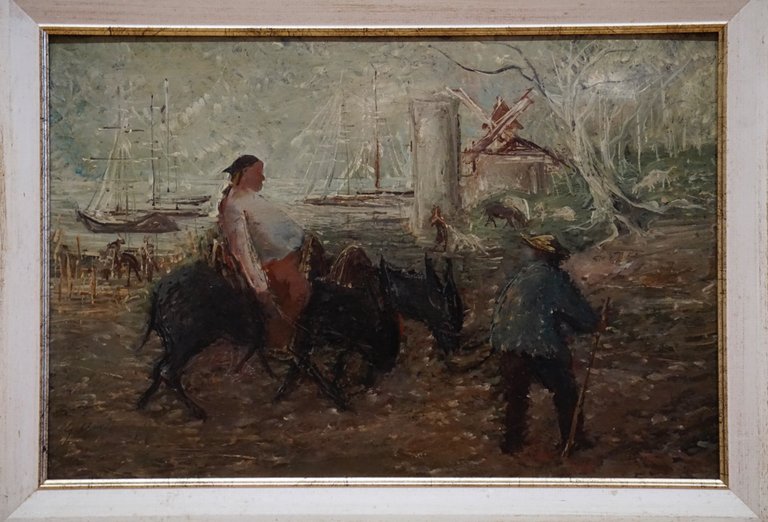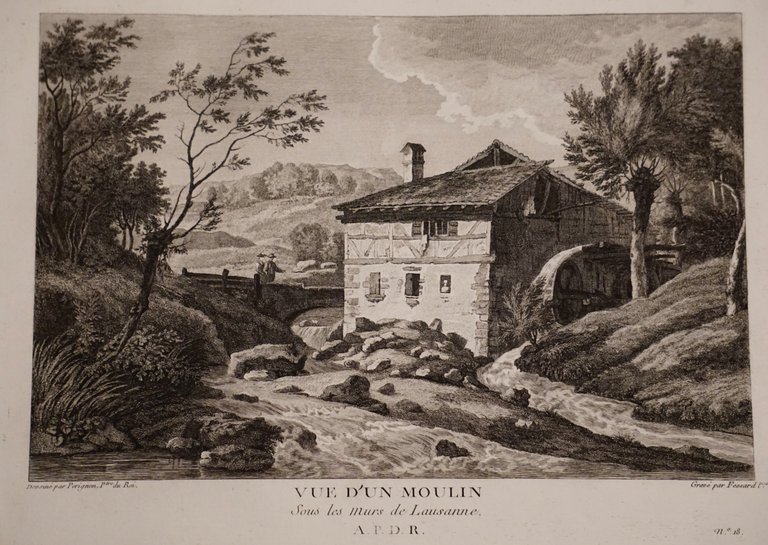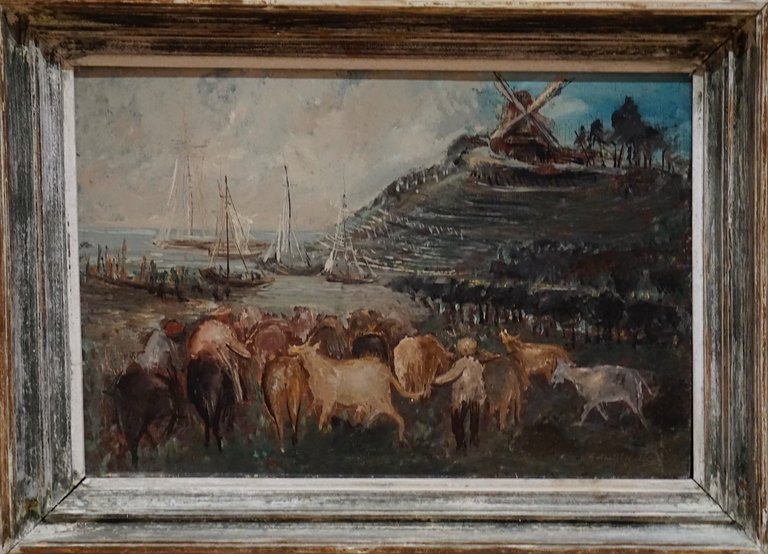Mills in art History
Hey dear community, first of all I would like to welcome you to my new post and hope you had a day full of interesting experiences! Today I would like to discuss an interesting topic associated with art history and hope you can expand your knowledge a little.
Here you can see two oil paintings by the painter Franz S. Gebhardt-Westerbuchberg (1865 - 1969) as well as a copper engraving which represent a mill in the Swiss city of Lausanne and I would like to use these works of art to go a little more closely into the importance of the mills in art history. Landscapes in which mills can be seen have shaped different types of artists for centuries who have not focused on the technical but visual aspects first and foremost and it is also considered a typical motif for rural life and can often be seen together with grain fields in which work is currently being done or idyllic rivers which are surrounded by water mills. Depending on the art epoch, the artist has oriented himself and it has also strongly influenced the art of etching and depending on the artist are typical characteristics that the mills have usually been depicted from the front and a lot of emphasis has been placed on the front as well as background and mills alone were depicted very rarely and especially often it was part of landscape painting. Most of the time, a cheerful mood was created in the works of art by the used colors and those who look at paintings notice that the artists represent most mills by day and are long-distance from the village and usually decorate the landscape alone and together with other mills. This topic is often associated by the term with the so-called art mills, which describes also mills from the 19th century which were particularly innovative for the time from a technological point of view and have distinguished themselves from the functionality of the others and were much more efficient. Mills as a motif in paintings has already been used by numerous well-known artists and among the best-known painters is probably Vincent Van Gogh, who himself lived near numerous windmills and has been strongly influenced by it and other painters of the Dutch school were enormously influenced by the mills and often during the golden age you can typically find windmills in the landscape together with tulip fields and world-famous are also the painter Rembrandt van Rijn, Jacob van Ruisdael or Aelbert Cuyp. In Dutch painting, mills were particularly presented between the 17th and the 19th century and with the increasing industrialization, the representation of mills in art has become rarer, but to this day you can still find numerous artists who are inspired by this important culture, but the topic has moved into the background.
Thanks a lot for stopping by and I hope you could learn something new about art history! I captured these pictures with my Camera Sony Alpha 6000 plus 55-210 mm lens.



Very beautiful work. A great artist, no doubt.
Happy that you like his works, too :)
i love this kind of posts where it goes on to a quick dive in the deep of the history and brings forth so much knowledge that was lost in mere seconds.
Happy to hear that you appreciate what I am doing :)
The mills are really looking so beautiful to actually behold and admire of
True! Mills in art history are generally such an important topic and I hope I could contribute a part to spreading the topic more.
https://twitter.com/WayShola84156/status/1769270048357556441?t=U6bvfbs53J8b22BHD4mPxg&s=19
These two paintings are quite ancient but still look beautiful
Happy that you like them so much :)
https://twitter.com/adenijiadeshin7/status/1769310364770967824?t=5-g0ieqKIbi2JUZOvIikNQ&s=19
Interesting. Game of mind thought full art
Well said!
This painting looks very special and very beautiful, a lot of hard work has gone into making it.
True!
Thanks alot dear.
https://twitter.com/lee19389/status/1769664619524522059
#hive #posh